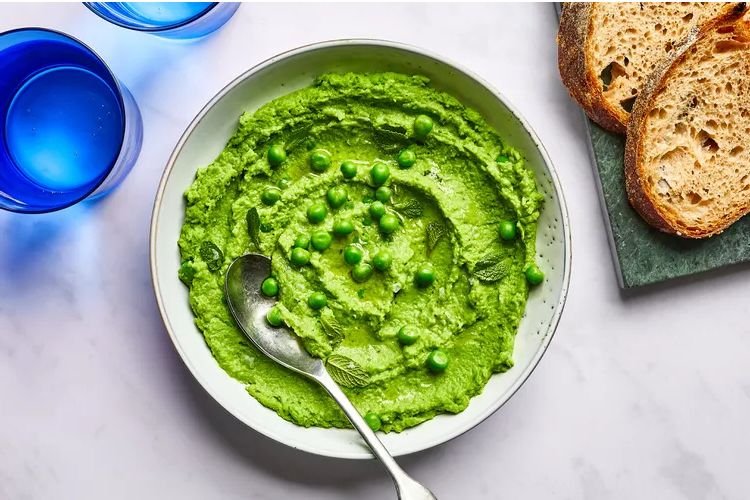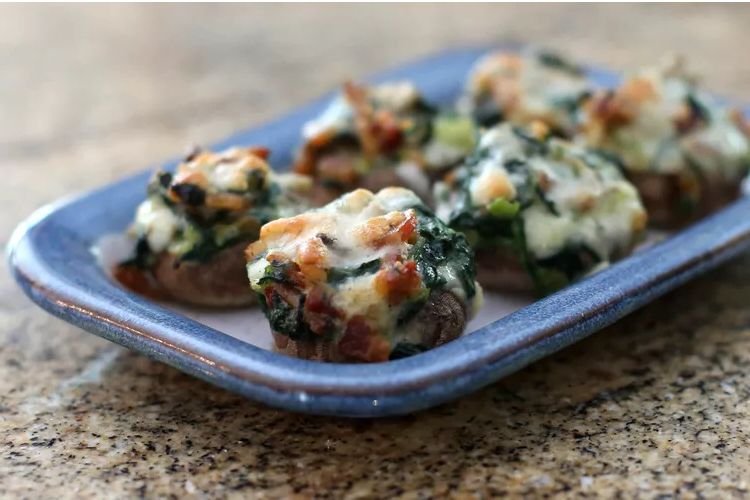Preparation: 5 minutes
Cooking: 5 minutes
Total Time: 10 minutes
Servings: 4 portions
A minted pea puree on your dish offers a hint of spring, regardless of the time of year. The vivid green shade and the invigorating fragrance of mint make it a delightful complement to a wide range of meals.
Don’t confuse pea purée with mushy peas. This recipe uses fresh or frozen garden peas and fresh mint, which are quickly cooked and then mashed or blended. Mushy peas, on the other hand, are made from dried marrowfat peas that are slowly cooked with bicarbonate of soda, causing them to swell and break down into a soft, mushy texture.
Pea purée is a flavorful addition that goes perfectly with most meat and seafood meals. It’s especially great with rich fish like smoked mackerel fishcakes. For a veggie-friendly choice, try spreading the purée on toast as a light snack or side.
Ingredients
- 2 cups water
- 10 1/4 ounces (300 grams) fresh or frozen green peas
- 1/4 cup fresh mint leaves
- Salt, to taste
- Black pepper, to taste
- 1 tablespoon butter (optional)
- Chopped fresh mint leaves (optional)
Steps to Make It
01
Make sure you have all the ingredients ready before you start.
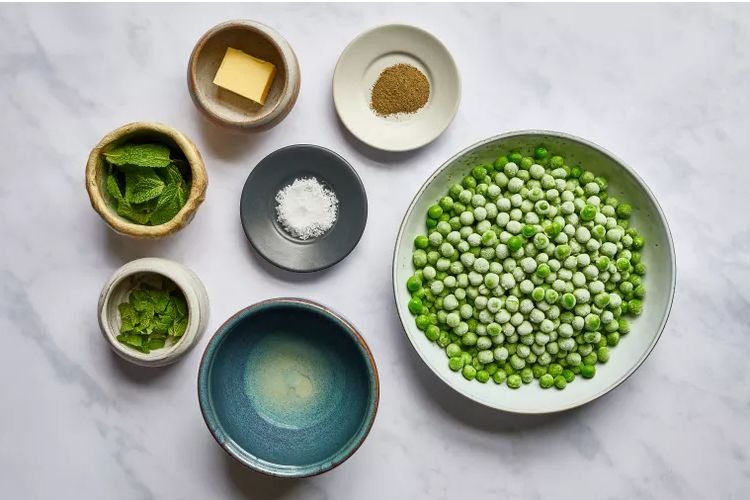
02
Pour the water into a medium-sized pot and bring it to a boil. Toss in the peas, fresh mint, and a pinch of salt, then return to a boil. Lower the heat and let it simmer until the peas are soft, about 5 minutes.
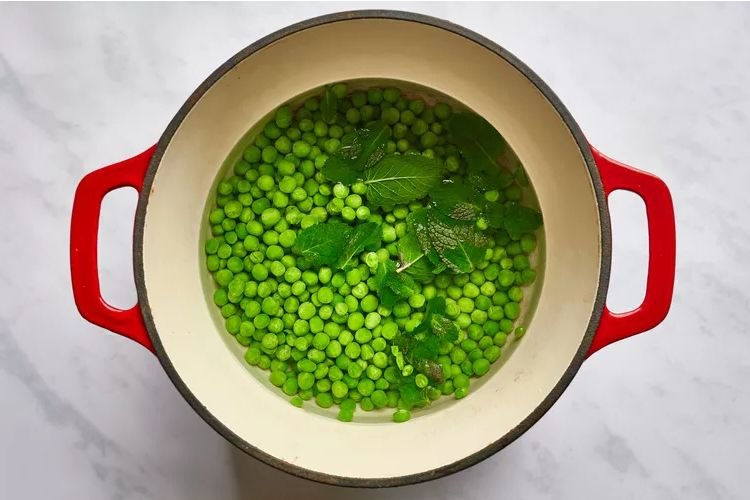
03
Strain the peas and mint using a colander.
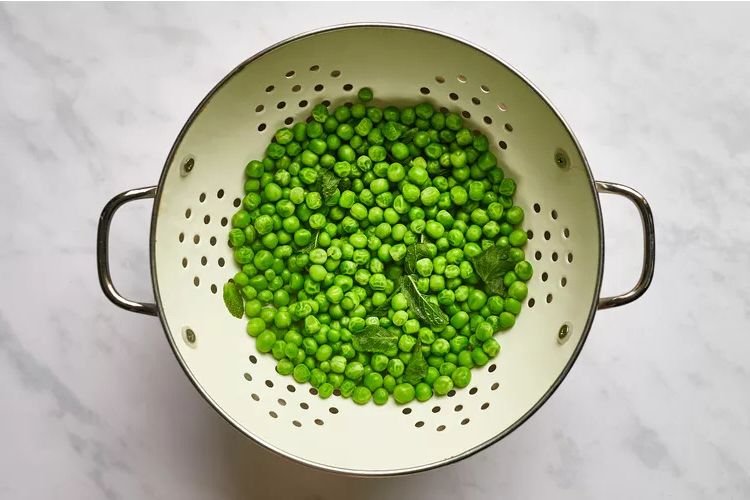
04
Blend the peas and mint with an immersion blender to form a smooth mixture. If you don’t have an immersion blender, you can use a food processor or mash the peas thoroughly with a potato masher or fork. Check the flavor and adjust with salt and pepper as needed.
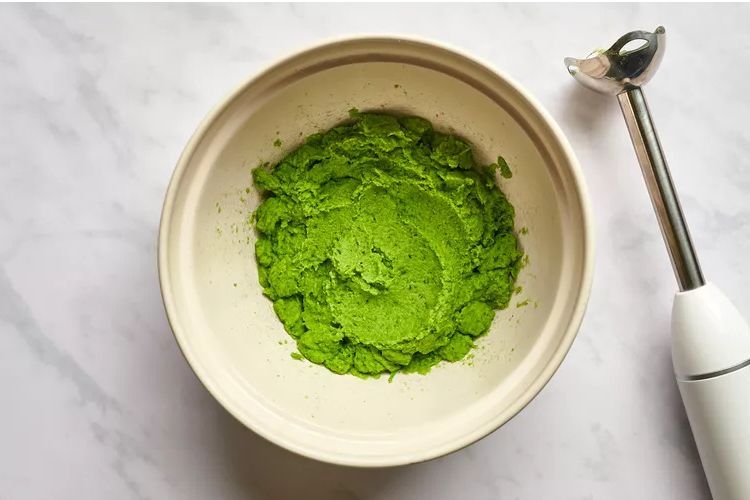
05
You can keep the peas as a slightly chunky purée, but for a smoother texture, press the mixture through a fine mesh sieve.
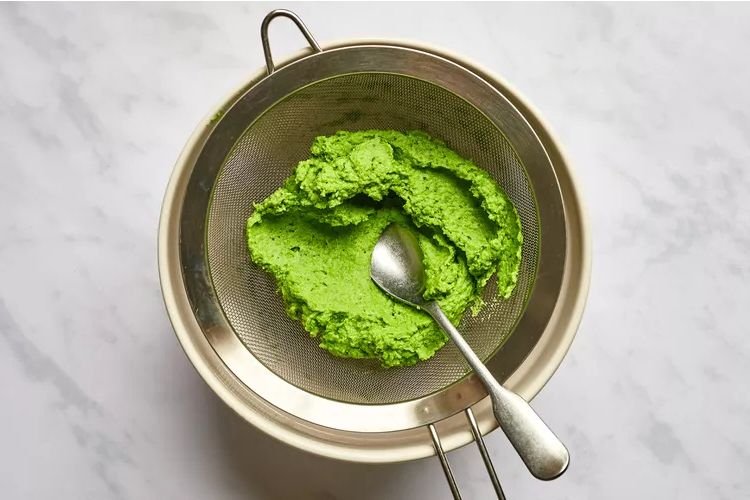
06
Add the butter and chopped mint leaves (if desired) and stir until the butter melts and combines evenly into the purée.
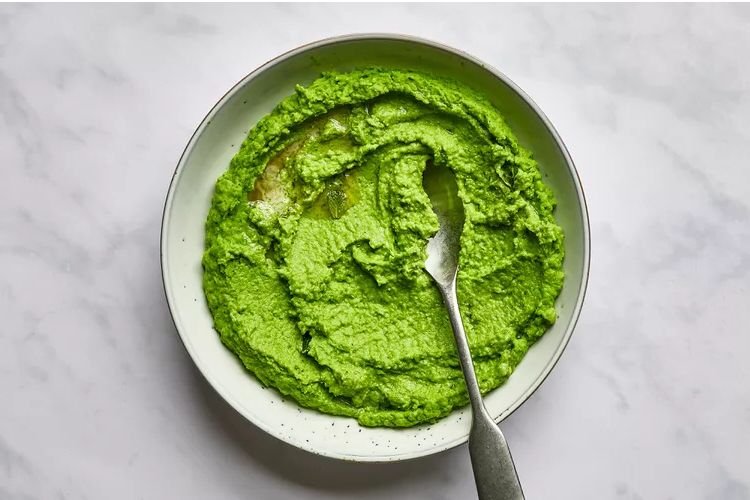
07
Enjoy the minted pea purée warm as a side dish with your preferred meat or seafood meal.

Tips
- The fresh pea season in Britain and Ireland is brief (usually from May to October), so take advantage of them while available. Though shelling fresh peas takes a bit more time, their flavor is worth the extra effort.
- When fresh peas are out of season, frozen peas are a great alternative and work beautifully for purée, plus they’re much quicker to prepare.
- The pea purée can be frozen, but it’s best used within one month. Thaw it in the fridge before serving.
Recipe Variations
- To enhance the flavor, cook the peas in vegetable or chicken stock instead of plain water.
- Try using different herbs. While mint is the traditional choice, tarragon or winter savory also pair nicely. Alternatively, swap half of the mint with another herb for a unique blend.
Nutrition Facts (per serving)
- 63 Calories
- 0g Fat
- 12g Carbohydrates
- 4g Protein
FAQs:
1. Can I use dried peas instead of fresh or frozen peas?
No, this recipe is designed for fresh or frozen garden peas. Dried peas, like the ones used for mushy peas, need a completely different cooking process. They take much longer to cook and won’t give you the same fresh, vibrant flavor and smooth texture that fresh or frozen peas do. Stick to fresh or frozen peas for the best results.
2. Can I make the pea purée ahead of time?
Yes, you can! This is a great recipe to prepare in advance. Once the purée is ready, let it cool completely, then store it in an airtight container in the fridge. It will stay fresh for up to 2 days. When you’re ready to serve, reheat it gently on the stove or in the microwave. If it feels too thick after refrigeration, just add a splash of water or stock to loosen it up.
3. Can I freeze the pea purée?
Absolutely! Pea purée freezes really well. Transfer it to a freezer-safe container or zip-top bag, and it will keep for up to one month. When you’re ready to use it, thaw it overnight in the fridge and reheat it gently on the stove or in the microwave. Stir it well to bring back its smooth texture.
4. What can I use instead of fresh mint?
Fresh mint is the classic choice for this recipe, but if you don’t have any, you can experiment with other herbs. Tarragon, basil, or parsley all work well. You could even mix and match—try using half mint and half basil for a unique flavor. Just keep in mind that mint gives the purée its signature fresh, spring-like taste.
5. Is this pea puree recipe vegan-friendly?
Yes, it can be! The recipe is naturally plant-based except for the butter, which is optional. If you want to keep it vegan, simply skip the butter or replace it with olive oil or vegan butter. The purée will still be creamy and delicious.
6. Can I use a regular blender instead of an immersion blender?
Yes, you can! An immersion blender is convenient because you can blend the peas right in the pot, but a regular blender or food processor works just as well. If you’re using a regular blender, let the peas cool slightly before blending to avoid accidents, and blend in small batches if needed.
7. What dishes go well with pea purée?
Pea purée is incredibly versatile. It’s a fantastic side dish for grilled or roasted meats like chicken, lamb, or pork. It also pairs beautifully with fish, especially oily fish like salmon or mackerel. For a vegetarian option, try spreading it on toast or serving it with roasted vegetables. It’s a great way to add color and flavor to any meal.
8. How do I make the purée smoother?
If you want an extra-smooth purée, blend the peas and mint thoroughly, then press the mixture through a fine mesh sieve. This will remove any remaining lumps and give you a silky, restaurant-quality texture. It’s an extra step, but it’s worth it if you love a super-smooth purée.
9. Can I use canned peas?
It’s not recommended. Canned peas are often too soft and salty, which can ruin the texture and flavor of the purée. Fresh or frozen peas are the best options because they have a sweeter, fresher taste and hold their shape better during cooking.
10. How can I adjust the consistency if the purée is too thick?
If your purée is too thick, don’t worry—it’s easy to fix! Just add a small amount of water, stock, or cream (if you’re not vegan) and blend again until it reaches your desired consistency. Start with a little at a time, as you can always add more if needed.
11. Is this recipe gluten-free?
Yes, this recipe is naturally gluten-free. All the ingredients—peas, mint, salt, pepper, and butter (or oil)—are gluten-free. Just double-check any additional ingredients you use, like stock, to make sure they’re gluten-free if needed.
12. Can I add other vegetables to the purée?
Definitely! This recipe is a great base for experimenting with other vegetables. Try adding spinach, zucchini, or even avocado for a different twist. Just keep in mind that adding other vegetables might change the flavor and texture, so adjust the seasoning accordingly.
13. How do I store leftovers?
Leftover pea purée can be stored in an airtight container in the fridge for up to 2 days. When you’re ready to eat it, reheat it gently on the stove or in the microwave. If it’s thickened in the fridge, add a splash of water or stock to bring it back to the right consistency.
14. Can I make this recipe without butter?
Yes, the butter is optional. It adds a rich, creamy flavor, but you can leave it out if you prefer a lighter version. If you skip the butter, you might want to add a drizzle of olive oil instead to enhance the texture and flavor.
15. What’s the best way to serve pea purée?
There are so many ways to enjoy pea purée! Serve it warm as a side dish with your favorite meat, fish, or vegetarian main course. You can also spread it on toast or crostini for a quick and tasty appetizer. It’s a versatile dish that adds a pop of color and freshness to any meal.

